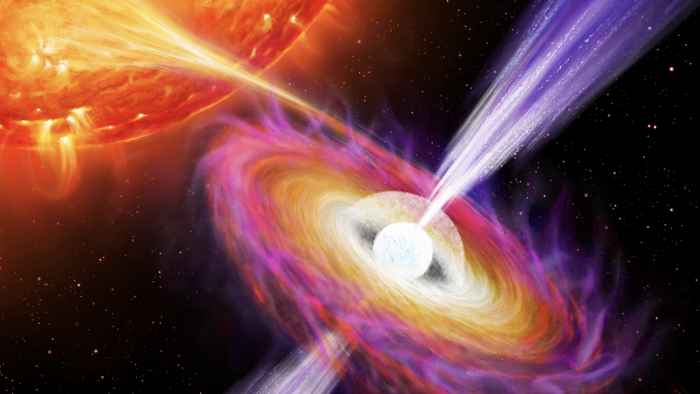Cosmic fireworks from a neutron star shed light on an old black hole mystery
20 March 2023

X-ray binaries are systems formed by a compact object, a neutron star or a black hole, and a star of a similar size to the Sun. The compact object swallows matter from its companion star through a disk that is incredibly hot and emits energetic radiation, especially X-rays. This process is called accretion and usually these dinner parties occur infrequently in violent eruptions that make the binary shine a thousand times brighter than it normally does. Neutron stars and black holes are messy eaters, however, so part of the gas that they attract is flung into space through powerful collimaterd jets or dense winds.
The X-ray binary known as Swift J1858.6-0814 was discovered in 2018 when it started consuming material from its companion star. It did so in such a violent way that it was baffling astronomers right from the earliest observations. It showed incredible sparks, called flares, of light at wavelengths from radio to X-rays for over a year. The origin of this "cosmic fireworks" was unknown, but because the behavior was so extreme, the astronomical community was convinced that this X-ray binary must contain a black hole. However, over a year since its discovery, it finally was established that Swift J1858.6-0814, in fact, harbors a neutron star.
The international team made use of many different space-based and ground based telescopes, including the Hubble Space Telescope, the Very Large Telescope and the XMM-Newton satellite, to decipher the complex table matters of this neutron star, and finding direct links with the black hole GRS 1915+105, infamous for its extreme behavior. They unravelled that the gaseous disk surrounding these compact objects must cyclically empty and fill, causing repeated spectacular ejections of matter into jets (seen at radio waves and infrared wavelengths). The discovery that both black holes and neutron stars experience this instability implies that it is a fundamental (i.e. unavoidable) process that occurs when compact objects are overfed.